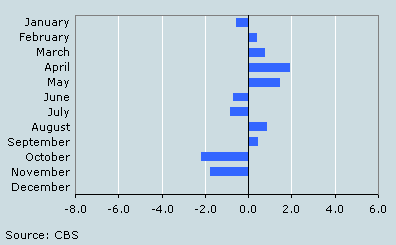Consumers always more gloomy in the autumn

Consumers’ attitudes are related to the time of year. The recurrent annual fluctuations in consumer sentiment are not related to developments in the economy. For this reason, to obtain a more reliable result, seasonal effects are removed from consumer confidence.
Autumn makes consumer more pessimistic
The Consumer Confidence Survey shows that consumers are generally more sombre in the autumn than at any other time of year. In October and November they are always more negative on all the component indicators of consumer confidence. At the start of the year on the other hand, in January, consumers are more optimistic.
Graph 1: Seasonal factors in 2007 of component indicator ‘favourable time to buy expensive durable goods’
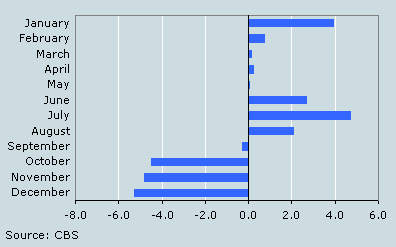
Upward correction for negative seasonal factor
The exact underlying causes of the seasonal effects in consumer confidence are not known. The Consumer Confidence Survey does not examine this aspect. Interestingly, similar seasonal effects are also visible in stock market share prices.
To get a more reliable indicator, Statistics Netherlands corrects consumer confidence figures for these seasonal effects. To do this it calculates seasonal factors: a negative factor means that consumers are more pessimistic in that month than average. This is the case for example in October and November. To get a better picture of the month-on-month change, an upward correction with the seasonal factors for these two months is applied.
Seasonally corrected figures most relevant
Statistics Netherlands’ publications on consumer confidence are always based on the seasonally adjusted figures, as seasonal effects are not important for the development of the economy. Once these effects have been removed, an initial decrease may turn to be an increase, or vice versa.
Correction of component indicators
The calculation of seasonally corrected consumer confidence starts with adjustment of the component indicators. The correction of an overall series from its component series is sometimes called the indirect method. This as opposed to the direct method, in which the main series is corrected separately. In the indirect method, the components after correction for seasonal effects together constitute consumer confidence.
Adjustment of seasonal correction
Seasonal effects may change in the course of time: they may shift, disappear or emerge. Therefore the seasonal factors must be reviewed at the end of every year. Every January the seasonally corrected figures of the previous year are therefore recalculated. Figures for the previous year are then slightly revised.
2. Seasonal factors in 2007 of component ‘economic climate in previous twelve months’
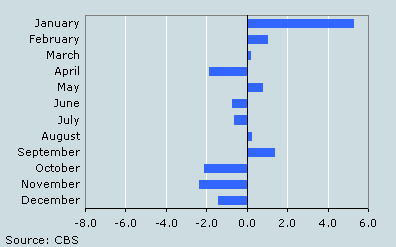
3. Seasonal factors in 2007 of component ‘economic climate in next twelve months’
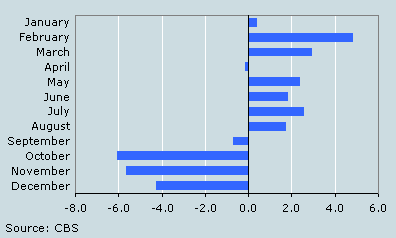
4. Seasonal factors in 2007 of component ‘own financial situation previous twelve months’
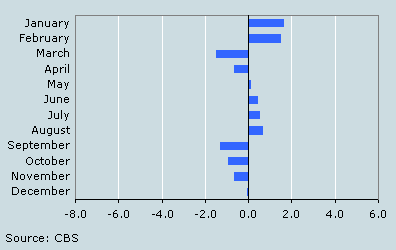
5. Seasonal factors in 2007 of component ‘own financial situation previous twelve months’
